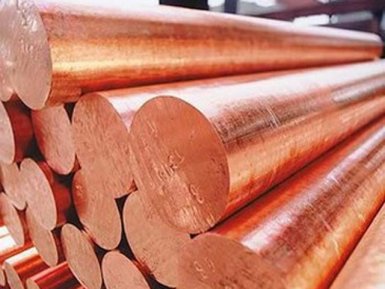E110 zirconium pipe, round bar

Characteristics of cubic Zirconia
Zirconium is an element of side groups chem. system with atomic number 40, and denoted by the symbol Zr, silver-grey shiny metal with a yellowish tint. Zirconium is ductile and resistant to corrosion. The name zircon probably originated from the Arabic — cinnabar (zarkûn) or Persian Golden color (zargun). It is quite widely distributed in the Earth’s crust. Its common reserves according to some estimates far more reserves of silver. The deposits of ores of zirconium are practically scattered in various parts of the world where it can be found in the form of amorphous salts and oxides, as well as in the form of single crystals, for example, in the United States (in North Carolina). Crystals of this type sometimes reach in the fields of Nigeria more than a kilogram of weight. The richest deposits of zirconium are located in Australia, North America, India, and South Africa. The zirconium in the ore is often found together with the hafnium — on qualities closer to the metal zirconium. Reserves of zirconium of natural deposits in our country are estimated ten percent of the world. Zirconium was first isolated in 1799 from the mineral zircon in the form of dioxide, a chemist from Germany — Clarocom. It is smelted from enriched ore concentrate, where the content of Zirconia is 60−65%.
Basic properties
Zirconium is paramagnetic, heat-resistant and corrosion-resistant metal, the boiling point 4409 °C. From α-zirconium specific gravity is 6.5 g/cm3; temperature at 25−100°C specific heat equal to 0,291 kJ/(kg•K), melting point is 1855 °C; boiling point equal 4409 °C; coefficient of linear thermal expansion at a temperature of 20−400°C is 6. 9x10−6; coefficient of thermal conductivity at 50 °C is equal to 20, and 96 W/(m•K); electrical resistivity of zirconium at a temperature of 20 °C is 0.44 micro-Ohm • mm2/m.
| Physical qualities Zr | |
|---|---|
| Atomic (molar) mass, g/mol | 91,224 |
| The degree of oxidation | 4, 3, 2, 1, 0 |
| Density [g/cm3] | 6,5 |
| The melting temperature t°C | 1855°C |
| The heat of fusion kJ/mol | 19,2 |
| The thermal conductivity K [W/(m·K)] | 22,7 |
| Heat of evaporation kJ/mol | 567 |
Zirconium at a temperature of 0.7°K becomes a superconductor. It is a paramagnetic metal and a specific magnetic susceptibility increases with heat and achieves a temperature of 73 °C — 1,28x10-6, and at 327 °C — 1,41x10-6. Pure Zirconia lends itself easily to cold and hot working (rolling, forging, stamping). The impurity of oxygen, nitrogen, hydrogen, carbon, sulfur makes Zirconia very fragile. At 20 °C modulus of elasticity equal to 9700 kgf/mm2; tensile strength is 25.3 kgf/mm2; Brinell hardness equal 64−67 kgf/mm2; also the hardness is directly dependent on the admixture of oxygen. This metal not be cold pressure treatment in O2 — 0,2% or more.
History
Since the isolation of pure Zirconia Claperton, it took more than a hundred years. Cubic Zirconia has remained exotic, rare metal, and enough besides to expensive for industrial use. It is mainly applied in laboratory practice, as well as jewelers to produce exclusive jewelry. However, in the last century, cubic Zirconia has turned into an indispensable structural material. Industrial application of Zirconia began with the 1930-ies.
The use of zirconium
Nuclear power:
Zirconia has a high melting point and narrow is the capture cross section in thermal neutrons. This metal and its alloys (without mixture of hafnium) is therefore used in the manufacture of fuel assemblies — fuel systems and casings for nuclear reactors.
Superconductor:
The alloy of zirconium is 25% and niobium up to 75% (at 4.2° K becomes a superconductor) and can withstand up to 100 thousand A/cm2 load.
In metallurgy:
Zirconia is a good deoxidizer and diazotation, it is more effective than manganese, silicon, titanium. When the doping with zirconium to 0.8% mechanical properties, the machinability of steel is improved and the copper adds even greater strength and heat resistance with low loss of electrical conductivity.
In pyrotechnics:
Zirconia is able at a temperature of 250 °C to spontaneously ignite in air and burn with virtually no smoke with high speed. At this point the temperature reached 4650 °C — the highest possible for the metal fuel, emitting a bright light, used in fireworks, fireworks, the manufacture of flares, torches, flare, patavium (FOTAB). Zirconium alloys with cerium to create a large luminous flux. Zirconium powder mixed with potassium chlorate salt is a smokeless facility at the fuses and signal lights, replacing the lead azide and mercury fulminate .
Life and medicine:
Zirconium is biologically inert material, more resistant to biological environments, in contrast to titanium, due to what is used in the production of joint, dental and bone prostheses, and surgical instruments. The zirconium chemical inertness makes it possible to produce exclusive dishes with great hygienic properties.
Construction material:
Zirconium is used to make acid-chemical reactors, pumps, valves, replaced the noble metals. Zirconium in the nuclear energy sector is the main material of membranes for fuel elements. «Obezzhelezivaniya» zirconium is used as a refractory for lining glass furnaces and metallurgical furnaces and in the production of building ceramics, glazes, enamels for sanitary ware.
Buy at best price
Huge range of rare and refractory metals in stock LLC «AVEK global» can satisfy any customer. Absolute compliance with all technological norms of production ensures the quality of the finished product. Deadlines all orders the shortest possible. For any questions, experienced managers will give a full detailed advice. Carrying out wholesale orders, you can count on company-provided flexible system of discounts.


